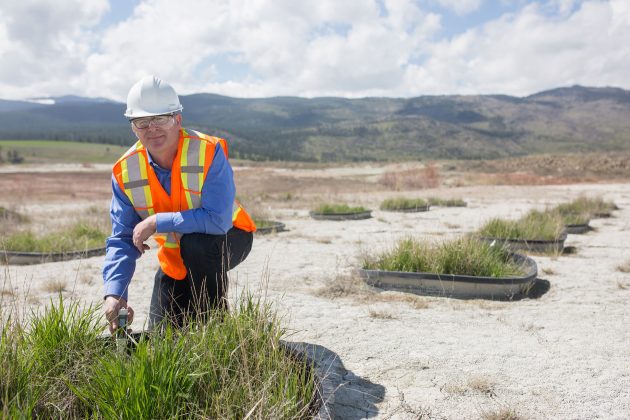
Genomics to support environmental assessments at mine sites
by CM Staff

Canada has approximately 10,000 abandoned mines that never achieved regulatory compliance

Dr. Lauchlan Fraser, Senior NSERC Industrial Research Chair in Ecosystem Reclamation and professor at Thompson Rivers University (CNW Group/Genome British Columbia)
VANCOUVER, BC — Environmental Assessment (EA) is a step in evaluating the health of reclaimed mine sites. EA is particularly vital to the local community, because EA has direct implications for human and environmental health.
Recent advances in genomic tools allow a broader assessment of environmental performance. One approach has been to analyze soil microbial community and diversity using environmental DNA (eDNA). However, biodiversity measurements of the microbial community are biased due to the presence of ‘relic’ DNA, which can exaggerate microbial biodiversity. Relic DNA is extracellular DNA from dead microorganisms that can persist in soils for years and can account for up to 80% of the total microbial DNA pool. Basically, relic DNA defeats the purpose of using microbial biodiversity as a metric for EA.
Drs. Lauchlan Fraser and Jonathan Van Hamme, Science faculty members at Thompson Rivers University, recognized the need to somehow remove relic DNA to develop a truly accurate picture of the active microbial organisms present at mine sites. With funding from Genome British Columbia (Genome BC) they will standardize and include protocols that can selectively analyze eDNA from living microorganisms.
“This protocol will provide a better estimation of microbial diversity by increasing sensitivity and reliability,” said Fraser who is also a Senior NSERC Industrial Research Chair in Ecosystem Reclamation, in a prepared statement. “This tool will be incredibly useful for the mining industry, BC Ministry of Energy and Mines, BC Ministry of Environment, and Environment and Climate Change Canada.”
The team will be working directly with two mining partners: Highland Valley Copper Mine and Copper Mountain Mine. They will be the receptors and will apply genomic tools to their operations.
Canada has approximately 10,000 abandoned mines that never achieved regulatory compliance, largely a result of mining practices before mine closure regulation. This can directly translate into saving dollars by ensuring the return of environmental security deposits, which can run into many millions of dollars, after clearing the EA. In the past, lack of reclamation compliance means most bonds are never returned.
“This work will support one of our province’s most active economic sectors,” said Federica Di Palma, Chief Scientific Officer and VP Sectors at Genome BC. “Genome BC’s investment will support better tools and guidelines for EA which will be validated by industry partners.”